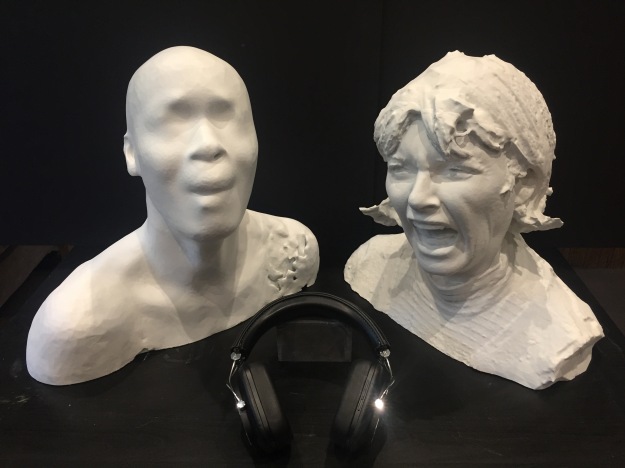An art installation by Terence Quinn MA Fine Art Digital (Dist) 2017
Most recently included as part of my current research presented at a conference organised by the Computer Arts Society at the British Computer Society, London on 9 July 2019:
Making the Absent Object Present: Towards a holographic Museum of Modern Art (hMoMA).
 Electronic Visualisation of the Arts London 2019
Electronic Visualisation of the Arts London 2019
Link to presentation : EVA London 2019 V7
Link to paper: https://documentcloud.adobe.com/link/track?uri=urn%3Aaaid%3Ascds%3AUS%3A7e5e2f1a-a082-41ab-a1ee-e65a40372bb9
Gold winner in Experience category Creative Conscience Awards July 2019
![]() https://www.creative-conscience.org.uk/awards/
https://www.creative-conscience.org.uk/awards/
Previously shown and presented at:
UAL Digital Edge Exhibition and Conference at Somerset House, London on 24 June 2019.
The Oxford Italian Association event in aid of Médecins Sans Frontières on 26 February 2018 at St. Hugh’s College, Oxford University.
BBC Radio 4 iPM Documentary, 14 July 2017
University of the Arts Camberwell MA Show, July 2017.
________________________________________________________________________________________
The artwork took its inspiration from the book ‘The Optician of Lampedusa’ by Emma Jane Kirby, published by Penguin.
TOIA_Newsletter_81_WEB_RGB-3
The Refugees’ Crisis was first exhibited at UAL Camberwell College of Arts MA Show in July 2017. This was the subject of a BBC Radio 4 iPM documentary featuring Terence Quinn and Emma Jane Kirby.


‘The Refugees’ Crisis’ is inspired by a true story of refugees escaping harrowing lives in their homeland, and eventually striving to reach mainland Europe by sea. Emma Jane Kirby, BBC European Correspondent was one of the first reporters to arrive on the scene in late 2015.
On a boating weekend off Lampedusa, the Italian island’s optician, his wife Teresa and three other couples came across hundreds in the water. This art installation narrates the experience of a refugee rescued from the clutches of the sea after a perilous crossing from Tunisia, and Teresa who was hospitalised by the emotional torment haunting her afterwards.
The artwork is in three layers and begins with two life-size 3D scanned and printed plaster sculptures (of actors taking the parts of the refugee and Teresa), set on transparent plinths surrounded by projections of the sea.

The viewer is then invited to wear headphones and stand between the physical sculptures, thus immersing them in the situation surrounded by the sea projected on the walls and the floor. At the same time the viewer hears the binaural recorded narrative between the refugee and Teresa, as though they are talking to them directly. The narrative starts as the refugee (named Leo after the actor who plays him) and Teresa unexpectedly discover each other from across the sea, and rises in pace and tone as the situation unfolds.
The viewer is also able to wear special glasses (the Microsoft HoloLens) to experience huge holograms of the same plaster sculpture of the refugee placed all around the display. The viewer can still see the physical art installation and is able to walk around the plaster sculptures of Teresa and Leo and holograms of him, as though all are physically present in the same exhibition space. A short clip of this Mixed Reality (sometimes called Augmented Reality) experience at UAL Camberwell College of Arts can be seen below. This is followed by the complete film of the two narrators as seen by the viewer wearing these special glasses.
The intended effect of this experience is to immerse the viewer in the true life situation of Teresa and the refugees in the sea, in order to invoke a powerful empathic reaction. This is a very different experience to seeing the plight of refugees on TV or reading about it, which is also often portrayed as a problem to us in Europe. That is why this artwork is called ‘The Refugees’ Crisis’ as it is about them not us. The artist hopes that this will encourage all who experience it to influence others to pressure our governments (in the artist’s case, the UK government) to do more to help refugees in need, in particular unaccompanied and orphaned children. We cannot solve this tragic problem, but we can all do more to assist in this humanitarian crisis.